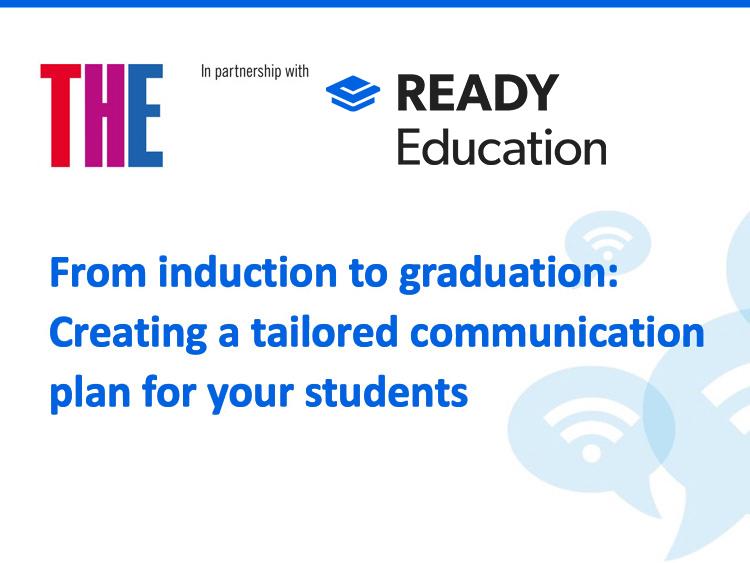The average UK worker spends only 15 minutes (or less) a day reading updates from their organisation, according to the Institute of Internal Communication’s 2023 IC Index. So, how do we engage higher education staff in such a short amount of time? This doesn’t apply only to messages sent out from internal communications; it’s relevant to anyone who wants to communicate clearly and succinctly to their team or to colleagues.
I work in internal communications at the University of Southampton. We work closely with teams across the university to understand what matters to our staff and how best to engage with them. We know that staff across the university are incredibly busy and how valuable their time is, so how do we get the most important updates to them?
Identify and understand your audiences
Universities are more complex than most organisations, which means we have many audience groups. Not only that, but they all access and consume information in different ways, so it stands to reason that our approach needs to be as diverse as our staff community. If we only have 15 minutes per day to reach them, then targeting will be key to ensuring we deliver the right message to the right staff at the right time.
- Universities need to get better at using Instagram – here’s how
- Authenticity sells because it matters
- Navigating crisis communications in HE: strategies for an effective response
So, what does that mean for our approach? The first step is understanding who our audiences are and segmenting them to identify distinct personas and how they access information. An academic is going to have different needs compared with someone in professional services.
The second step is identifying channels that reach them and developing new channels for those who are unlikely to access our traditional digital channels. The basics can be very effective, such as posters on the back of toilet doors, staff noticeboards and flyers in staff areas.
I recently introduced a communications toolkit to the university, which includes background information, the objectives of the campaign, key statistics, sample text and graphics. It means that staff have everything they need in one place, so they can share our campaigns easily in their own environments.
Some areas of the university deliver updates in regular staff training or in their own newsletters, so providing them with content to include can be most effective. The key is to be where they are rather than expecting them to come to our dedicated internal communications channels.
Bring the subject to life
Sometimes it’s not the what but the how. We can deliver messaging in a straight and logical way or we can approach it from a different angle and bring it to life through engaging campaigns and storytelling.
This is an approach we often implement, where we use our staff as examples of lived experience for a particular topic, such as mental health or menopause. This has proved to be incredibly effective in engaging staff. My colleague Denise Badden, professor of sustainable business, recently wrote in Campus about the impact of storytelling, and all the research confirms how powerful this can be.
The ‘why should I care’ test
Whenever crafting communications for staff, I think about what they would want to hear and why the piece would interest them.
For example, if I’m promoting training, I wouldn’t just state what the training is; I would also explain how it will benefit attendees and what they’ll learn from the session. It sounds simple, but so often organisations tell staff what they want to say rather than what staff want to hear, and this reframing can make a big difference.
Consider the barriers
Think about what the barriers are to communications reaching staff. Common barriers include lack of time, scepticism, no access to a laptop, language barriers and accessibility.
At the University of Southampton, we have been developing our communication channels and have established a new inclusive communication working group to understand our blind spots and how we can find best practices to reach as many staff as possible. This will include representation from each of our campuses and different faculties and schools to ensure it’s as diverse as possible.
We will then be producing a guide for all communications leads on the best ways to reach more staff through our formats, language and design, so we have a consistent approach.
Listen to the data and insights
Technology is instrumental in reaching as many staff as possible. So many organisations have a wealth of data that they’re not accessing, which is a wasted opportunity.
We can use data available from our channels to help us understand which topics staff want to hear about and what content is resonating. We can discover what time of day is most effective for posting, and if there are themes that are consistently popular with staff. We can track data on views against attendance at training or sign-ups for events to get a more complete picture of whether a campaign has been successful.
Two-way communication is also important to ensure we are really listening to feedback from our people. We engage with colleague networks to hear the views of staff and use intel from pulse surveys and managers to take on board any feedback, whether negative or positive.
Learn from others
We can learn so much about best practices from other organisations, including from other industries. I recently attended a meet-up of almost 100 internal-communication leads in London, where we discussed the latest trends, staff feedback, new technology and our successes and failures. It’s important that we don’t become complacent and stick to how things have always been done; and we need to keep up to date with new ways to engage our people.
Ultimately, getting through to as many staff across the university as possible requires a strategic approach, along with creativity, to yield the best results. Using simple language will be important, as will bringing subjects to life by understanding what matters to your people.
If you only have 15 minutes, it’s best you use them wisely.
Kelly Hibbs is internal communications manager at the University of Southampton.
If you would like advice and insight from academics and university staff delivered direct to your inbox each week, sign up for the Campus newsletter.




comment1
(No subject)